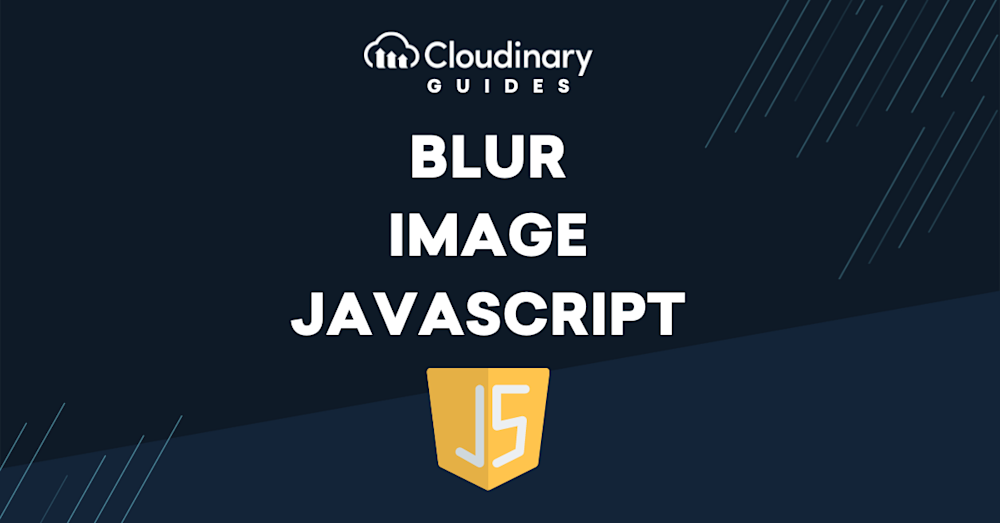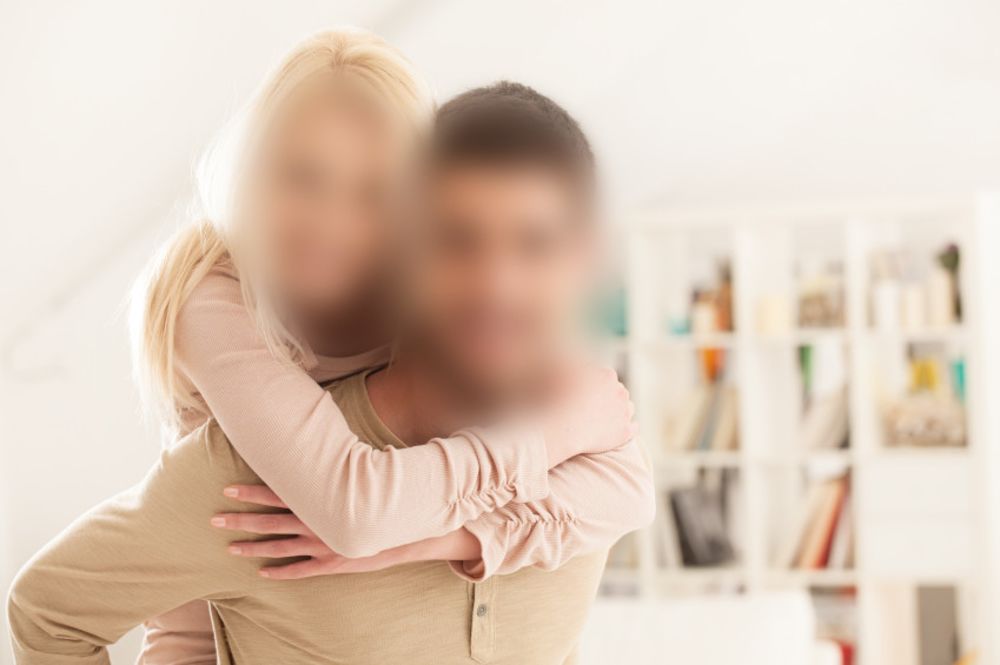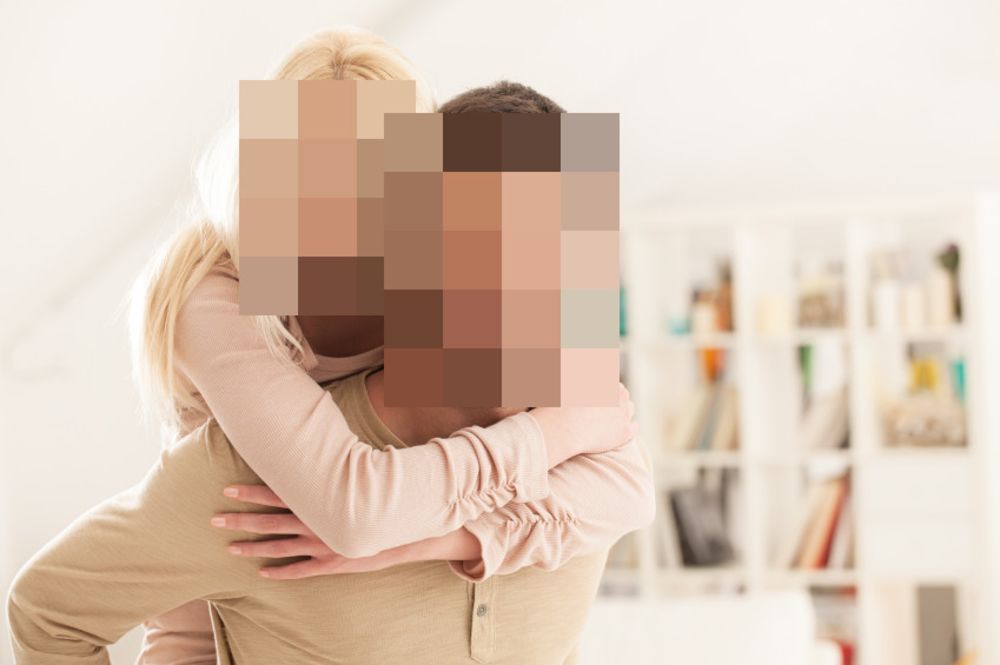Blurring images is a common requirement for both websites and applications. In this guide, we’ll go through the steps to blur images accurately using JavaScript and CSS. We’ll examine different methods, their possible uses, and how to solve common problems.
In this article:
- What Does ‘Blurring an Image’ Mean?
- Reasons and Requirements for Blurring Images in JavaScript
- Mechanics of Implementing Image Blur in JavaScript
- Alternative Route: Using CSS for Image Blur in JavaScript
- Pro-Grade Techniques for Image Blurring with JavaScript
- Integrating Cloudinary for Advanced Image Blurring and Pixelation Techniques
What Does ‘Blurring an Image’ Mean?
The term ‘blurring an image’ mainly refers to the process of making the edges and small details of an image less sharp or clear. This can be done through programming using different algorithms in JavaScript. The extent of blurring can range from a slight blur to a more abstract transformation, giving developers a lot of creative control and flexibility.
Reasons for Blurring Images in JavaScript
We developers all want to provide a visually compelling and user-friendly interface. Image blurring is one of the more subtle and nuanced techniques involved in this process. You may ask yourself, “Why would we want to blur an image when we’ve strived to present it as clearly as possible in the first place?”
Here are some key reasons to start considering learning how to blur an image in JavaScript:
- Amplifying User Interface (UI) Design—Blurring images can facilitate creative UI designs, effective focus diversion, and an engaging user experience. By smartly blurring particular sections or backgrounds of a webpage, developers can guide users’ attention to specific points, improving overall User Experience (UX) design and interface engagement.
- Ranging Applications in Image Processing – Blurring has extensive applications in image-editing software and services, facilitating effects such as simulating movement, creating smooth transitions or depth-of-field effects, or aesthetically enhancing the output. The precise control JavaScript offers over blurring makes it indispensable in photo-editing solutions.
- Ensuring Privacy Protection – Blurring is crucial to protecting sensitive or private information concealed within images, ensuring compliance and control over privacy requirements. Be it user profiles, confidential data, or sensitive locations, image blurring with JavaScript offers a reliable and efficient way to maintain privacy.
Mechanics of Implementing Image Blur in JavaScript
Blurring an image with JavaScript might seem complex, but it’s all about playing with the image’s pixels. We’ll walk through this step by step so you can grasp how to softly blend parts of your image for that blur effect.
// Create a new Image object
var img = new Image();
// Set the source of the image
img.src = 'image.jpg';
// Wait for the image to be loaded before proceeding
img.onload = function() {
// Create a new canvas element
var canvas = document.createElement('canvas');
// Get the 2D rendering context from the canvas
var context = canvas.getContext('2d');
// Ensure canvas size matches the loaded image size
canvas.width = img.width;
canvas.height = img.clientHeight;
// Draw the loaded image on the canvas
context.drawImage(img, 0, 0);
// Retrieve the pixel data from the canvas
var pixelData = context.getImageData(0, 0, img.width, img.height);
// Your blur algorithm would be applied to pixelData here
// This area is where the manipulation of pixel data occurs.
// In a full implementation, you'd modify pixelData's pixels
// to achieve the blurring effect.
// Note: This code doesn't have a built-in function to apply the blur.
// For a true blur, you'd need to implement an algorithm or use a library.
// Update the canvas with the new (possibly manipulated) pixel data
context.putImageData(pixelData, 0, 0);
};
A few common problems can slow down performance and reduce efficiency when blurring images with JavaScript. These issues might be long processing times because of the complex calculations required for blurring or images flickering because of incorrect management of tasks that run simultaneously. However, you can overcome these problems by improving your code to run faster and using reliable and thoroughly tested libraries.
Alternative Route: Using CSS for Image Blur in JavaScript
Adding to CSS’s powerful utility, the built-in filter function `blur()` has been specifically designed to blur HTML elements, including images. This function is straightforward and faster, though it provides less granular control over the blurring mechanism than JavaScript.
.blur { filter: blur(5px); }
In cases when lighter computational resources are required, CSS and JavaScript can work in tandem to achieve the blurring effect. This can be done by assigning the ‘blur’ class to the desired image element using JavaScript, as shown below:
/* This CSS class applies a blur effect to the elements it is assigned to. */
.blur {
filter: blur(5px); /* The 'filter' CSS property is used to apply graphical effects like blurring. Here, it specifies a 5-pixel Gaussian blur. */
}
Tackling Browser Compatibility Issues
Most modern browsers support CSS filters, but not all browsers might work the same way when blurring images with JavaScript. It’s essential to check that your image blur feature works well in all the main browsers before you launch your app. Doing simple tests before going live can help you catch and fix any problems so there won’t be any nasty surprises after your app is out. Making sure your app works on different browsers can prevent issues and help everyone have a good experience with your app.
Pro-Grade Techniques for Image Blurring with JavaScript
This effect can significantly elevate your project’s aesthetic with the right approach. JavaScript simplifies the implementation of blur effects through its libraries and functionalities. Here are some protips for managing image blur in JavaScript:
- Designing a Blurry Background Image – Strategically blurring background images can minimize distraction, emphasize content, and add an aesthetic touch to your webpage. These effects can be achieved using JavaScript or simply by applying a CSS filter.
- Exploiting SVG Filters for Advanced Image Blurring – SVG, in contrast to CSS filters, provides greater freedom to manipulate the blurring effect, expanding the creative and functional possibilities of image blurring.
- Use JavaScript libraries – To expedite the implementation of the blur effect in your projects, leveraging libraries such as StackBlur or blurify.js can provide straightforward, optimized, and efficient solutions for image blurring. These libraries have been built considering developers’ needs and are readily compatible with standard web development patterns.
Integrating Cloudinary for Advanced Image Blurring and Pixelation Techniques
While we’ve explored the mechanics of blurring images with JavaScript and CSS, it’s worth mentioning that Cloudinary offers sophisticated, cloud-based solutions for image manipulation, including blurring and pixelation, which is especially useful for face privacy.
Automated Face Blurring and Pixelation with Cloudinary
Cloudinary simplifies blurring or pixelating faces in images through automated detection and application of effects. By setting the effect parameter to either blur_faces or pixelate_faces, developers can efficiently hide faces in images, enhancing privacy and compliance.
For blurring faces, Cloudinary allows you to specify the degree of blurring. The default value is 100, but it can be customized between 1 and 2000, where higher values indicate a stronger blur effect. Here’s how to apply a standard blur effect:
First, we start with an image
new CloudinaryImage("young_couple.jpg");
Then, we apply a standard blur effect:
import { blur } from "@cloudinary/url-gen/actions/effect";
import { faces } from "@cloudinary/url-gen/qualifiers/region";
new CloudinaryImage("young_couple.jpg").effect(blur().region(faces()));
And for a more pronounced blur:
import { blur } from "@cloudinary/url-gen/actions/effect";
import { faces } from "@cloudinary/url-gen/qualifiers/region";
new CloudinaryImage("young_couple.jpg").effect(
blur()
.strength(1000)
.region(faces())
);
Cloudinary also offers the option to pixelate faces, providing an alternative method for obscuring facial features. You can control the size of the pixel squares for more or less detail.
Standard pixel squares:
import { pixelate } from "@cloudinary/url-gen/actions/effect";
import { faces } from "@cloudinary/url-gen/qualifiers/region";
new CloudinaryImage("young_couple.jpg").effect(
pixelate()
It is possible to customize the square size:
import { pixelate } from "@cloudinary/url-gen/actions/effect";
import { faces } from "@cloudinary/url-gen/qualifiers/region";
new CloudinaryImage("young_couple.jpg").effect(
pixelate()
.squareSize(50)
.region(faces())
);
Wrapping up on Image Blurring with JavaScript
Blurring images with JavaScript is a valuable skill for web developers, including improving website design, hiding personal information for privacy, and creatively editing images. To get good at this, developers must keep practicing, trying out new ideas, and being creative.
Understanding how to blur images well can make websites look better and work in many ways. For example, it can help draw attention to the most essential parts of a website or protect users’ privacy without making the site ugly. The more developers experiment with blurring images, the more they can do with it.
Keeping up with the latest image blurring means developers can always offer the newest and best web solutions. It’s about learning and growing in your skills, which makes you a better developer and pushes the whole web development field forward.
Unlock the full potential of your digital content with Cloudinary’s advanced editing and optimization tools. Sign up for free today!





